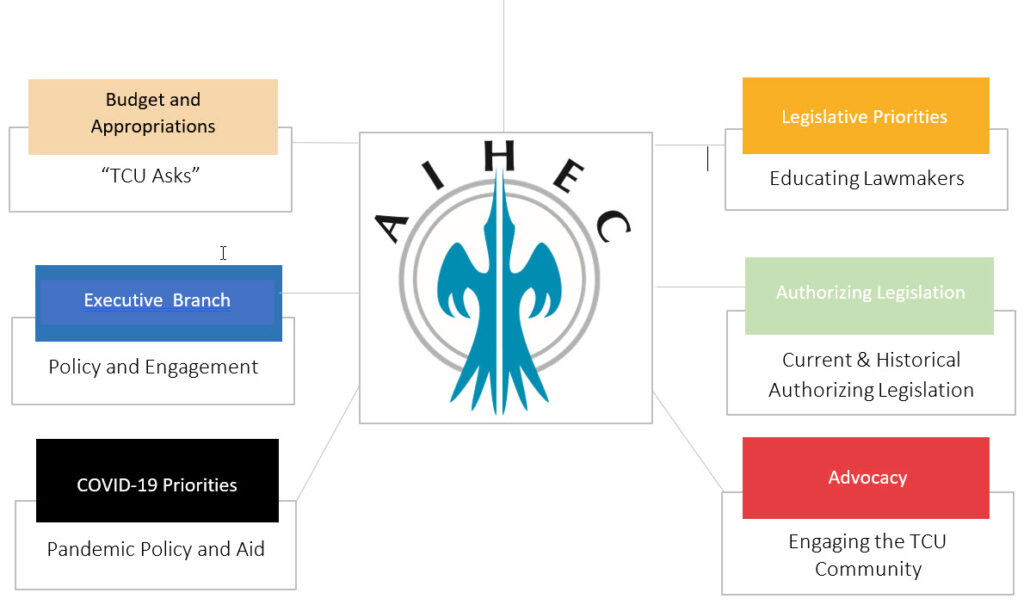National TCU Center of Excellence on Native Languages
//AIHEC
Native Languages
“Our language is our sovereignty. Our language is who we are as a people.”
~Professor Kathleen Kitcheyan
San Carlos Apache College
Reclaiming the Words of Our People Initiative: A Collaborative TCU Native Language Action Planning Project is the first nation-wide initiative to bring together Tribal College and University (TCU) language faculty and staff to plan and create an institutional capacity-building process for Native language revitalization. Under this initiative, AIHEC will develop and implement a strategic plan for American Indian and Alaska Native language revitalization at the nations TCUs.
TCU language programs are unique, as in many cases they are the only academic institutions in the country, and even in the world, where these languages are taught. The AIHEC Native Languages initiative aims to connect and coordinate all TCU language programs, including the TCUs without current language course offerings.
TCU Native Languages: By The Numbers
300 indigenous languages were once spoken in the territory of the United States
175 indigenous languages remain today, and only a handful are still spoken by children
33 TCUs offer Native language courses
29 of the Native languages taught at TCUs represent ten Native language families
16 TCUs have degrees or certificate programs in Native languages
7 TCUs currently teach more than a single Native language

Action Plan
The First TCU Languages Conference
Native Language Families Taught at TCUs By Tribal Group
Siouan – Lakota, Dakota, Nakoda, Nueta (Mandan), Hidatsa, Apsalooke (Crow), Umoho (Omaha), Ho-Chunk
Algonquian – Cheyenne, Blackfeet, Anishinaabe, Cree, Aaniiih, Menominee
Athabaskan – Dine (Navajo), Apache
Uto-Aztecan – Tohono O’odham
Iroquoian – Oneida
Salishan – Salish, Lummi, Lushootseed, Whulshootseed
Penutian – Nez Perce
Muskogean – Muskogee (Creek)
Eskimo-Aleut – Inupiaq
Caddoan – Sahnish (Arikara)
Language isolate – Kootenai
The TCU Native Languages capacity building process includes:
- Reviewing and Assessing: conduct baseline research and assessment to inventory Native language preservation and revitalization programs and resources at TCUs as well as best practices in Native language revitalization;
- Collaborative Planning: facilitate strategic, collaborative TCU-based planning to leverage, increase and share Native language preservation programmatic infrastructure and resources;
- Sharing and Acting: create and disseminate a comprehensive nation-wide TCU capacity building action plan that delineates areas of consensus, map forward movement in key priority areas, and strengthen and enhance TCU language preservation and revitalization programs.

Ronald Bone Shirt transcribing recordings of Lakota elders at Sinte Gleska University
|
